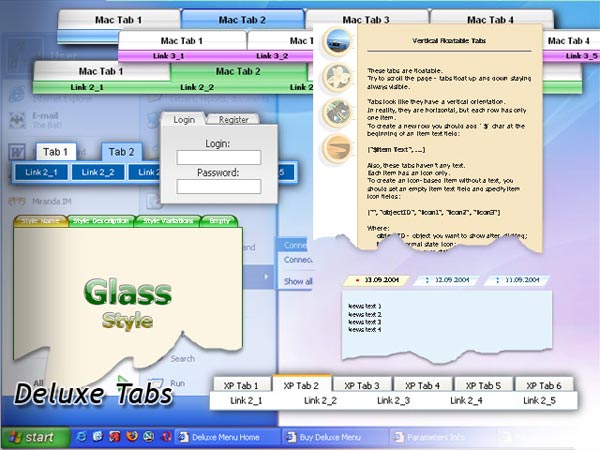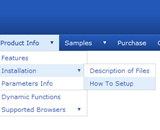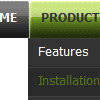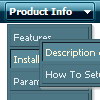Recent Questions
Q: What's happening is the rollover drop down menu sits at the very top-left of the web page..
No matter what I seem to try, I can't get it to fit in a space that seems plenty big for it.
A: Please check that you use relative position for the menu.
You should set these parameters:
var absolutePos=0;
var posX="0px";
var posY="0px";
Q: The home page of our website uses java script dhtml. The error comes up when attempting to select a tab for the first time; subsequent selections are fine. The error is something about an object being null. Probably just need to modify a function to test for null, but can't read the .js file because its obfuscated.
A: You should set the following java script dhtml parameter.
var bselectedSmItem=0;
There are no subitems in your menu.
Q: This is great on last quesion how can I make the items on the top menu with java different colors? I looked at this example and cannot figure it out
http://deluxe-menu.com/data-templates/multiple-styles-1-template-sample.html A: You should create Individual Item Styles and assign them to your topitems:
var itemStyles = [
["itemBackColor=#CE9DE1,#B978D1",],
["itemBackColor=#84DA7A,#48D641",],
["itemBackColor=#5EA6E1,#507ECB",],
["itemBackColor=#54CDCA,#32ABA8"],
];
["Home","", , , , , , , , ],
["Product Info","", , , , , "0", , , ],
["Menu Samples","", , , , , "1", , , ],
["Purchase","", , , , "_blank", "2", , , ],
["Contacts","", , , , , "3", , , ],
Q: We were wondering is there any api for the css menu tabs available?
We would need to programatically open a particular tab.
A: No, unfortunately Deluxe Tabs doesn't support API functions now.
You can use the following function to open specific tab:
dtabs_itemClick(menuInd,itemInd);
where
menuInd - index of a tab menu on a page, >= 0.
itemInd - index of a item, >=0.
For example:
<DIV onClick="dtabs_itemClick(0,2)" style="width: 200px; border: 2px solid #000;">
Click to open the third tab<
/DIV>










